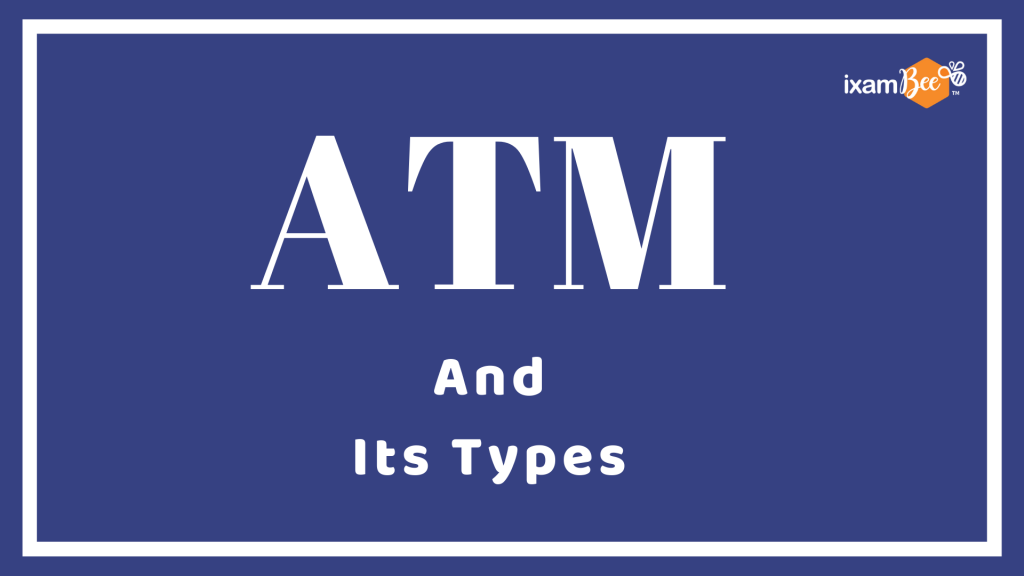WHAT IS AN ATM (AUTOMATED TELLER MACHINE)?
An ATM (AUTOMATED TELLER MACHINE) or ABM (AUTOMATED BANKING MACHINE) is an electronic telecommunication device that enables customers to perform various financial functions such as:
- Cash withdrawal.
- Cash deposit.
- Fund transfer.
- Account information.
- Regular bill payment.
- Balance enquiry.
- Mini statement. etc. Without the need of any banker or a cashier.
ATM & Important Facts
Before we read some more details about the ATM and its types etc., let’s first look into some of the common facts about the Automated Teller Machine (ATM):
When was the first ATM invented?
Chemical bank installed the first cash machine in the US on September 02,1969 at its branch in Rockville Centre New York.
When was the first ATM installed in India and who installed it?
Hongkong and Shanghai Banking Corporation (HSBC) installed its ATM and India’s First ATM at their Sahar Road Branch, Andheri East in Mumbai in 1987.
NOTE: There are more than 3.5 billion ATM machines all over the world.
Who invented the ATM?
The ATM was invented by John shepherd-Barron (a British) and Donald Wetzel (An American).
Some more facts about ATMs in India:
- There are 222,318 ATMs in India as per June 2019.
- Maharashtra has the highest number of ATMs in India.
- SBI is the bank which have the highest number of ATMs i.e. 59,521 installed in India.
- Ahmedabad is the city to have India’s first talking ATM.
- Maximum limit of cash withdrawal in an ATM is Rs. 50,000 a day.
TYPES OF ATM
There are various types of ATMs used for different purposes some of which are shown below:
ATMs are generally classified on two bases:
- Location Based Types of ATM:
- On site ATM:
In this, ATMs are situated either within the branch or is close to the premises of the branch so that customers can avoid the line that are present in the branch and can save their time to complete the transaction.
- Offsite ATMs:
In this, ATMs are located outside the bank like shopping malls, railway stations, airports and petrol pump etc. This is on a standalone basis where there is no physical branch present. This is being done by banks to reach more and more customers in the geographical areas where there is no branch of them but customers could still able to use their services.
- Worksite ATM:
Worksite ATMs are the ATMs that are located within the premises of an organisation and generally meant only for the employees of the organization.
- Mobile ATM:
also known as ATM on wheels. In this, the ATMs moves in various areas for the customers to let them use their services. This is done for the convenience of the customers. ICICI BANK was the first private sector bank to start mobile ATM in India. As per now some other banks have also started ATMs on wheels.
2. Operation Based Types of ATM:
- White label ATM:
ATMs that are provided by NBFC (NON-BANKING FINANCIAL COMPANY) are known as white label ATMs. These are set up, owned and operated by non-bank entities which are approved by RBI and are incorporated under the companies act, 1956. To drive ATM penetration in the country, RBI has approved (WLAs) i.e. Non-Bank entities to set up and operate their own brand of ATMs in the country. In these ATMs, transaction
from any bank is allowed and no logo of any particular bank is displayed.
- Tata was the first company which launched their WLA in the country with a name INDICASH.
- GREEN LABEL ATM:
Green label ATMs are the ATMs that are used for agricultural transaction.
- Orange label ATMs:
Orange label ATMs are used for share transactions.
- Yellow label: ATMs:
Yellow label ATMs are the ATMs that are used for E-commerce.
- Pink label ATM:
This type of ATM is solely made for women banking.
- Brown label ATM:
In this type of ATM, the hardware and lease of the ATM is owned by the service provider but the cash management and connectivity to banking network is provided by the sponsor bank.
- Cash dispenser: CD (cash dispenser) performs certain functions like cash withdrawal, mini statement, requests and balance enquiry.
These are the various types of ATMs that can be found at various sites/locations. ATMs have been widely in existence in India since years now, and prove to be useful and thus popular among the Indian population. They eliminate the risk of falling short of cash at any point of time. You can withdraw cash irrespective of your location or timing.
Also Read:
NABARD: Functions & Responsibilities
Get Free Online Test Series, GK updates in form of Beepedia, as well as latest updates for Bank PO, Bank Clerk, SSC, RBI, NABARD, and Other Government Jobs.
займ быстро через интернетпервый займ на кививзять займ без кредитной истории
